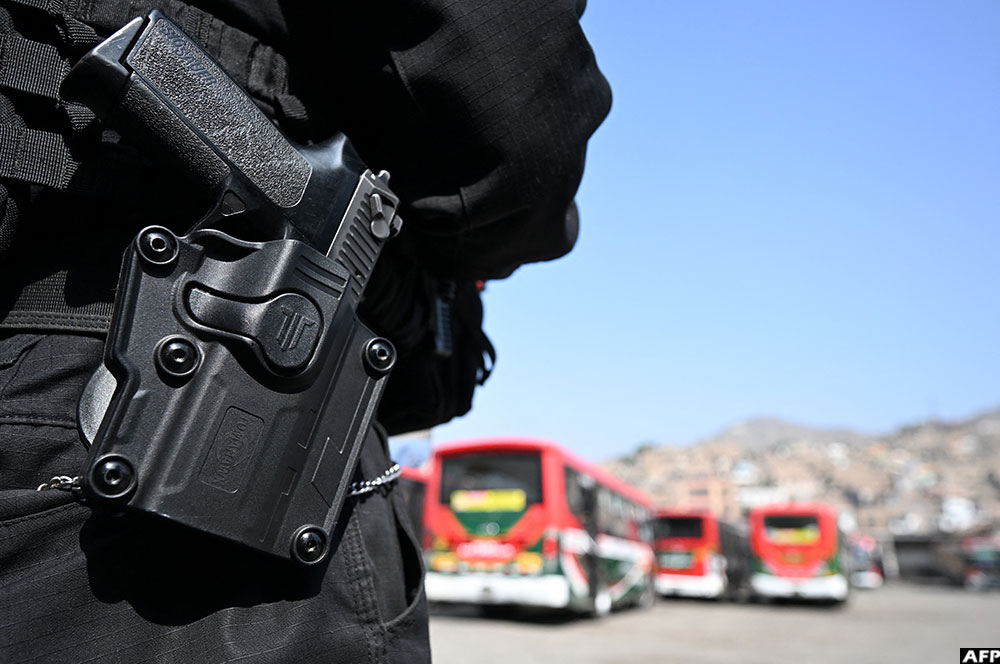'You live in fear': Where driving a bus can be deadly
Experts say the criminal practice has taken off amid high levels of post-pandemic poverty and unemployment, political instability following the 2022 ouster of president Pedro Castillo, and the domestic rise of gangs such as Venezuela's Tren de Aragua.
Bus driver David of the Santa Catalina company behind the wheels of his bus at the San Juan de Lurigancho district, east of Lima, on October 21, 2025. (AFP)
LIMA - Marco Antonio Huaman, a bus driver, was filling up with fuel in Lima last month when he got shot in the leg.
Next time he'd be dead, the gunman told him, unless the bus company paid a shakedown.
Huaman's employer and others in Peru are in the grips of an extortion wave that has claimed the lives of dozens of drivers, musicians and other professionals.
Experts say the criminal practice has taken off amid high levels of post-pandemic poverty and unemployment, political instability following the 2022 ouster of president Pedro Castillo, and the domestic rise of gangs such as Venezuela's Tren de Aragua.
In the capital Lima, at least 102 extortion-related killings were recorded in 2024 -- nearly 50 of them bus drivers, according to the Anitra carriers union.
Being a bus driver is the riskiest job in Peru, Huaman, 49, said as he played a video of himself lying bloodied on the floor of his bus after the September attack.
He spoke to AFP at his home in the poor neighborhood of San Juan de Lurigancho, where he is recovering from his wounds.
He is not planning on going back to work and is having doubts about a project to start his own small company. He fears it, too, would be a target.
Huaman's employer, the bus company Santa Catalina, declined to comment.
'You live in fear'
Most attacks happen at night, without warning, often in front of passengers.
"You live in fear. It causes you anxiety, even depression," said Huaman.
Many drivers wish to find other jobs, but options are limited in a country where 70 percent of work is informal.
: A police officer stands guard at Santa Catalina bus station, which has been targeted by up to five criminal gangs, at the San Juan de Lurigancho district, east of Lima.
I
t is also the reason for the explosion of extortioners -- often young people with nothing more than a cellphone -- and of hitmen who kill for debt as small as $5.
"I thought about resigning. But I need this money," said 48-year-old bus driver David, who withholds his surname for fear of reprisal.
The father of two earns about $25 for a 14-hour shift.
His five-year-old daughter, he said, cries every time he leaves for work -- fearful, as is he, that he will not return.
David told AFP he would like to emigrate but can't afford it.
For Huaman, "I would prefer to live in El Salvador" where President Nayib Bukele has imprisoned thousands in a crackdown on gangs, he said.
"I believe that today it is the safest country."
Between January and September, the police recorded 20,705 complaints of extortion in Peru, an increase of nearly 29 percent from a year earlier.
Unpopular former president Dina Boluarte was impeached by Congress this month against a backdrop of mass demonstrations over her failure to tamp down crime.
The interim government of her successor, Jose Jeri, has declared a state of emergency in place since Wednesday in Lima and its outskirts, and deployed soldiers in the streets.